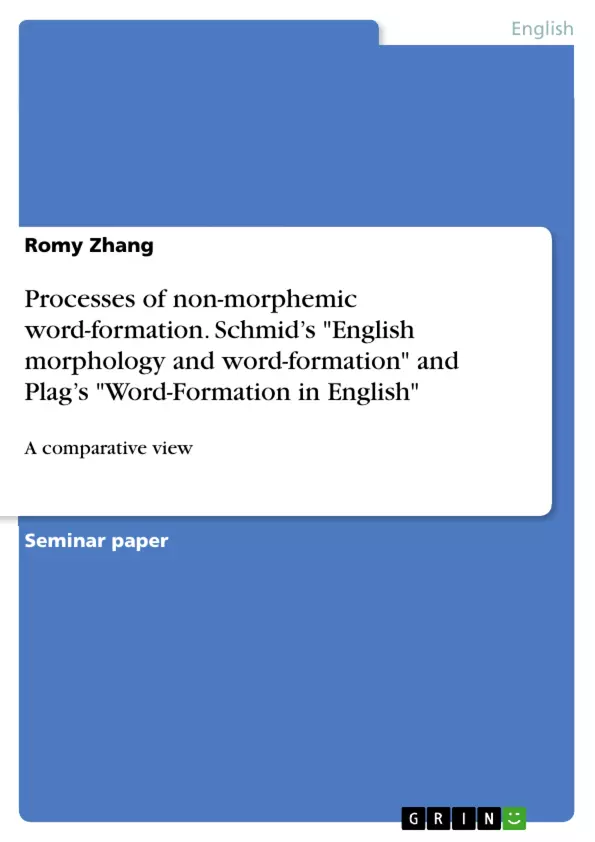A comparative view of approaches in non-morphemic word-formation; researching clipping, blends, acronyms and abbreviations, reduplication, back-formation as well as borderline cases that cannot be assigned clearly. This paper delves into the commonalities and differences of non-morphemic word-formation in Schmid's "English morphology and word-formation" and Plag's "Word-formation in English".
Non-morphemic word-formation is a linguistic field full of exceptions and the odd one out in terms of morphology. It is a particularly interesting case in point as it does not rely on morphemic building blocks and shows some peculiarities that can be viewed from various angles.
Inhaltsverzeichnis (Table of Contents)
- Introduction
- Non-morphemic word-formation
- Clipping
- Blends
- Acronyms and Abbreviations
- Reduplication
- Back-formation
- Borderline cases
- Conclusion
- Bibliography
Zielsetzung und Themenschwerpunkte (Objectives and Key Themes)
This paper explores the divergent approaches to non-morphemic word-formation presented in Schmid's "English morphology and word-formation" and Plag's "Word-Formation in English". It examines the authors' classifications of the individual processes, highlighting similarities and discrepancies.
- The nature of non-morphemic word-formation and its unique characteristics
- The different approaches to classifying non-morphemic word-formation processes
- The cognitive aspects of non-morphemic word-formation, including conceptual blending theory
- The role of professional jargon and its influence on the development of non-morphemic words
- The potential for ambiguity and borderline cases in the classification of non-morphemic word-formation
Zusammenfassung der Kapitel (Chapter Summaries)
The paper begins by introducing the concept of non-morphemic word-formation and its distinction from morphemic processes. It then delves into the different classifications proposed by Schmid and Plag, focusing on the individual processes of clipping, blending, acronyms and abbreviations, reduplication, and back-formation.
The chapter on clipping explores the different types of clipping, including fore-clipping, back-clipping, and middle-clipping, and examines the authors' differing perspectives on this process. The chapter on blending examines the conceptual blending theory and its implications for understanding how blends are created and interpreted.
The remaining chapters on acronyms and abbreviations, reduplication, and back-formation further explore the different approaches taken by Schmid and Plag, highlighting their similarities and differences in classification and analysis.
Schlüsselwörter (Keywords)
The primary focus of this paper is on non-morphemic word-formation, including processes such as clipping, blending, acronyms, abbreviations, reduplication, and back-formation. It examines the contrasting perspectives of Schmid and Plag, highlighting the cognitive aspects of word-formation and the role of professional jargon.
- Quote paper
- Romy Zhang (Author), 2021, Processes of non-morphemic word-formation. Schmid’s "English morphology and word-formation" and Plag’s "Word-Formation in English", Munich, GRIN Verlag, https://www.grin.com/document/1474075



